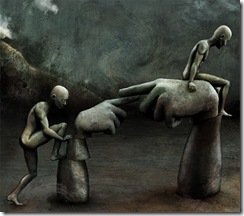Mission Statement
Mothers Day March in Washington DC, May 8, 2011
MOTHER BLAMING
Entry Citation: Caplan, Paula J. “Mother Blame.” Encyclopedia of Motherhood. 2010. SAGE Publications.
Mother Blame
The blaming of mothers for virtually anything that goes wrong with their young or adult offspring, as well as for a host of societal ills such as juvenile delinquency and teenage pregnancy, has been described as similar to air pollution: it is pervasive but unnoticeable until one’s attention is drawn to it or the environment changes.
Revealing the Roots of Mother Blame
Mother blame may seem to make sense, since in contrast to fathers, mothers are still generally expected to do the lion’s share of child rearing and childcare. Societal pressures on mothers to be the ones to take children to doctors and therapists render them disproportionately available for scrutiny by clinicians and researchers, and thus more likely than anyone else to be blamed for their child’s troubles. In contrast, researchers Caplan and Hall-McCorquodale found that even when professionals wrote about fathers, it tended to be either complimentary or unrelated to the child’s emotional disturbance.
A tendency to blame mothers still pervades even when the host of other influences on children is taken into account: adults visiting or living in or near the home, teachers, other children, the media, books, and the children’s innate temperaments or predispositions. Nevertheless, in a study of 125 articles written by mental health professionals in scholarly journals, mothers were blamed for 72 different kinds of problems in their offspring, ranging from bed-wetting to schizophrenia. Each article was classified in relation to 63 types of mother blame, such as numbers of words used to describe mothers and fathers, direct attributions of children’s problems only to mothers, and unquestioning acceptance of mother blame from previous writers.
In no category did the authors blame anyone else nearly as much as mothers, and this was true of female and male authors alike. In many of the articles, the authors went to extreme lengths to blame mothers, despite facts presented within these articles that often strongly suggested another, obvious source of the children’s problems. In contrast, fathers—even those who are sexually abusive—are rarely blamed for children’s problems.
Different Standard for Fathers
Often, a mother’s presence in her children’s lives is considered potentially dangerous, so much so that some theorists and clinicians urge mothers to decrease their involvement with their children; however, the father’s presence is considered highly desirable, and even when the father’s absence is lamented, the father is rarely blamed for being absent. This curious pattern may be partly related to the common expectation for mothers to be the primary nurturer, which results in the labeling of lapses in a mother’s nurturance as unnatural. This standard is not expected from fathers, so even a father’s absence is often described wistfully or sadly but not with anger or blame. However, evidence has shown that very young babies smile at their fathers as well as at their mothers and can form strong attachments to both, and nurturance from both fathers and mothers can powerfully affect their children, as can the absence of nurturance from either.
Because of society’s tendency to blame mothers for children’s behavior problems, mothers often blame themselves as well.
Results of Mother Blame
Three major problems result from the use of mother blame in trying to understand the causes of problems. One is that blame easily leads to the neglect of factors other than the mother that might help in addressing the problem; a second is that most people, when blamed, tend to feel overwhelmingly responsible, guilty, and anxious, which can impede their efforts to help their child; and a third is that focusing only on mothers’ influence leads to a narrow view of human experience. The patterns of therapists’ mother blame that Caplan and Hall-McCorquodale reported in their articles have continued in a wide array of arenas. As just one example, Regina Edmonds has documented the ways that some of the most prominent family systems therapists have overwhelmingly pathologized and targeted mothers, despite the fact that a family systems approach is not supposed to be selective toward anyone in the family group.
The power of mother blame places mothers under immense pressure, creating conscious or unconscious worry that everything they are doing in raising their children could be wrong and that if anything does go wrong, they alone will be held responsible. Under the circumstances, a different perspective could include increasing attention to and appreciation of the good that mothers manage to do despite such pressure.
The consequence for fathers of the ubiquity of mother blame is a paradox about the visibility of their role and the frequent distortion of it when it is noticed. Research shows that the vast majority of fathers in two-parent, heterosexual households do less than one-third of the housework and child-care; however, this work becomes far more visible than the work of the mothers, because it is not generally regarded as their responsibility. In contrast, actual harm clearly caused by some fathers, such as sexual abuse of their children, is often less visible, because victims and others focus blame on the mothers for allegedly failing to protect the children from the abuser.
Mother blame is common among not just therapists but also laypeople, and is powerful in a sexist society. Caplan revealed that quite often, those who will not tolerate offensive jokes about women will not object to the identical jokes if they are about mothers. Mother-blame has been taken to extremes, such as hate speech that is intended to shame, silence, and/or render its victims powerless, helpless, and hopeless. Mother blame can be reduced by increased awareness of the prevalent myths and perceptions about mothers that give rise to mother blame, consideration of how these perceptions affect attitudes toward mothers, consideration of other factors that may contribute to children’s problems, and acknowledgment of mothers’ strengths and positive contributions to children’s development.














